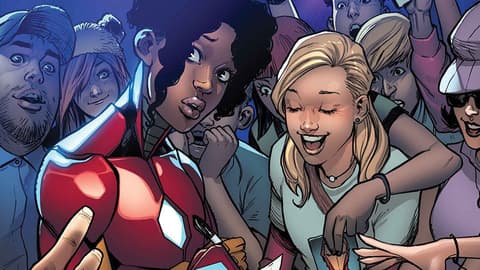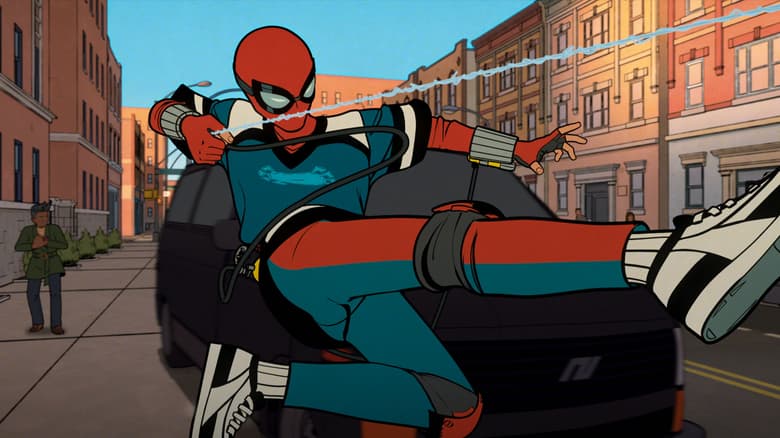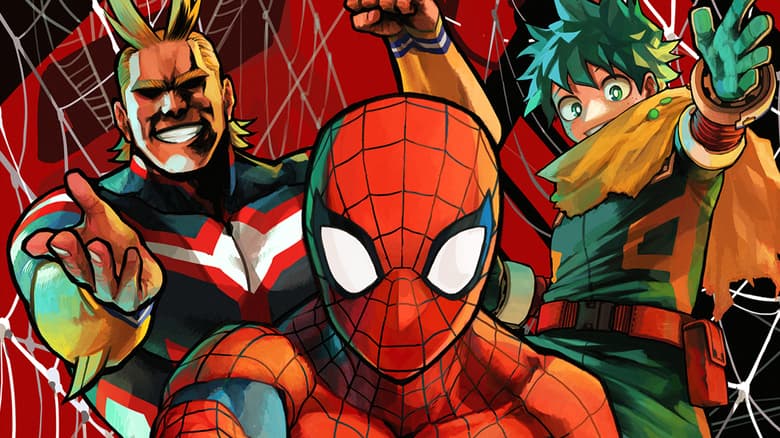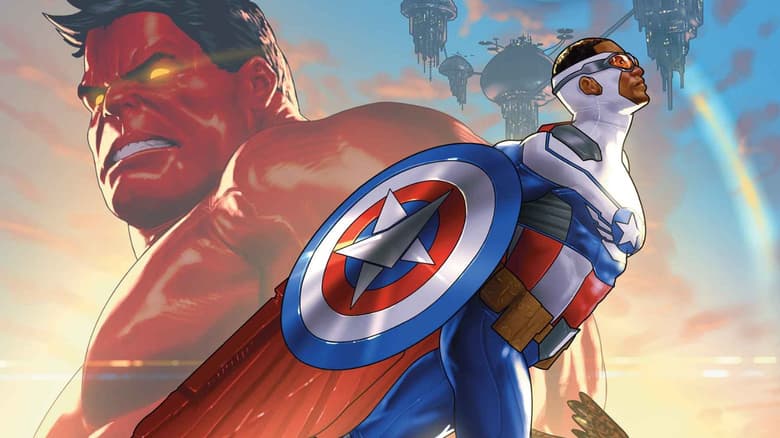Invincible Iron Man: Forging a Villain
Brian Michael Bendis shares his formula for creating a better bad guy!

As INVINCIBLE IRON MAN #6 hit shelves this week, readers discovered a rough week for Riri Williams. Not only did she see her latest adventures going viral, but Ironheart had the unenviable position of catching the attention of the latest villain to the “Red and Gold” rogues’ gallery.
Of course, every hero needs a good villain; it comes with the job—and the fancy armor! But not just any baddie will do. So, who better to talk about what goes into crafting the right kind of enemy for an armored super hero like Iron Man or Ironheart than series writer, Brian Michael Bendis?
Marvel.com: Who are your favorite villains in the Marvel Universe, particularly those who existed before you became “Brian Michael Bendis” the comic writer?
Brian Michael Bendis: My favorites are not going to surprise too many people. Magneto is probably the [most well created] villain as far as craft goes. Here’s a character who teeters on the verge of madness, but we’ve also seen what’s formed him. We know what drives him. We understand and empathize with his point of view. We may even agree with it. We just can’t agree with how far he’ll go to make it happen. And that makes him a phenomenal antagonist. You can create a villain who not only does the audience like but also agree with. But then he goes and does something, and that’s where he loses them.
I’m going to switch to Doctor Doom for a minute here, but it holds with Magneto, too. There’s a real winning personality most writers have been able to find within the “Bwwaa ha ha” bad guy moments where we see this villain is a real person. When I picked my members of the Cabal, those characters were six of my favorite villains and there they were. That dynamic was ideal because they’re all Type A personalities with very clear agendas. They’re all broken in some way, and they wear it on their sleeves. What makes for a better “Twelve Angry Men” than that?
Marvel.com: What about these villains makes them compelling characters for you not only as a reader but also as a creator?
Brian Michael Bendis: You know, so many people wonder why we like Walter White from “Breaking Bad.” You don’t have to like these characters, you just like watching people be very good at what they do. Take a look at Tony Soprano and what he did. Walter White was better! And it’s fun to see people be good at their job. Even TLC reality shows do this same thing with their extravagant home flipping and wild motorcycle building series. That’s what makes villains captivating: seeing them pull of these grand plans better than anyone else!
Marvel.com: Of course, you’ve done more than just play with other people’s toys; you’ve created your fair share of characters as well during your tenure at Marvel. What do you think helps villains make the greatest impact, both on fans and on the residents of the Marvel Universe?
Brian Michael Bendis: There are two things I’ve always wanted to accomplish. Every creator— no matter the medium—has certain “itches” that they want to scratch. It doesn’t matter how many times you scratch it, you just can’t help but go back there for more, you know? With me, this idea of taking a villain like The Purple Man and scraping off the comic book silliness—and I mean that not at all in a pejorative sense, but as someone who loves it—but to scrape off all of the “stuff” and get to the true horror of the character, what it can do and what it represents. From there, I want to be able to tell a story that gives the ultimate version of its power and form, and from there, it becomes impossible to disassociate the villain from the respective hero. It’s definitely something I got to do with Purple Man and Jessica Jones.
The same notion, that I’m in the middle of right now, is the other big mountain that I’ve wanted to climb. I’ve done versions of this before, but I’m fascinated with [something] right now, and that is when people land themselves in these deep, dark pits and have to crawl out of them. The one that Victor Von Doom is in right now and is trying to pull himself from in INFAMOUS IRON MAN is the biggest hole anyone’s ever tried to escape from—to be honest—all of literature from the dawn of man. To go from what he did in [Secret Wars], which was an abomination of all things, and now here he is trying to redeem himself from that? It’s so much fun to write.
Marvel.com: It goes back to your previous point about villains where we may have a good idea about the end result, but it’s watching the path that the character takes to get there that imparts a sense of closure—that proves satisfying for us as readers.
Brian Michael Bendis: Exactly, especially when the Marvel Universe never closes and its characters are always in motion and moving in different directions. So, to take a moment to zero in on a character and explore what he or she wants and how far that person will go to get it is really some of the most fun you can have as a writer. Look through the eyes of Magneto? I’m Jewish, I get it! [Laughs] But would I go where he goes? Of course not! But trying to put yourself in his shoes is a pretty interesting thing.
Marvel.com: We’ve been looking at things from a broader perspective, but let’s drill down a bit and look at both Iron Man and Ironheart.
Given that both characters’ heroic personas evolve from their powerful armor, how does this affect the way you go about developing a villain? Is it the person in the armor or the armor on the person that drives the development of their enemies?
Brian Michael Bendis: [Laughs] You said a lot there—that was like 30 questions! But they’re all excellent ones. This is all I’ve been thinking about lately with these two characters. Yes, with Iron Man, the metaphor of the armor isn’t lost on anyone including the person in the armor. They’re all smart enough to get how he’s wrapped himself in this protective cocoon so the bad people can’t hurt me anymore. So, there’s that.
But what they do with the armor? Wearing armor goes back thousands of years. Who doesn’t think about armor and King Arthur and his Knights of the Round Table from hundreds of years ago? Armor has been used for many reasons: religious, military, iconic. For Victor, he’s clearly working on some level where technology and all things mystic are merging. And this is something I’ll be playing out not just in his book but others as well. Stuff I hinted at years ago with Tony Stark, Sorcerer Supreme in the future. There’s an argument that says the Singularity might still come from man, and a character like Tony might have decided that when the Singularity comes, he might want it to be him.
With all of that in mind, I’ve given a lot of thought over the armor Victor has and what it could do along with how he uses his sorcerer abilities to enhance what it can do. Then we have Riri who has designed her armor using the base of Tony’s ideas, but then we’re already seeing that she’s added things to [hers] that his could not do. I think we’re seeing that [it] will be, as issues go on, it’s going to be both fun and frustrating. Just when you start to like something that her armor can do, it will change. But that’s just like her: Riri is also in a state of constant fluctuation personally.
Marvel.com: Which brings us to the issue of the villains…
Brian Michael Bendis: Right. The other question you asked centered on the villains that are developed around these heroes. Looking at these heroes, whose powers center around technology, the one thing that stands in direct contrast would be something organic, right? Something that can’t be controlled by technology. Hulk vs Iron Man is the perfect [example] of this conflict as they’re getting their powers from different places. One is getting stronger as the other is growing weaker. I love this character, Animax, that we recently introduced. She’s this mutant who can basically create creatures out of nothing. Monstrous creatures are great for an armored hero to fight!
Interestingly, that character was co-created by my daughter Olivia, and Matt Fraction and Kelly Sue DeConnick’s son, Henry Leo. I was sitting at the table and I said “I need a villain!” and Henry Leo responded “It’s a woman, she’s a mutant, and she shoots animals out of her hands.” And then I asked Olivia, “What’s her name?” to which she replied “Animax.” And there you go. Thanks, guys! So, sometimes it’s as fun as that to dip into that sort of childhood imagination, or in my case, I stole it from our children. But I feed and clothe them, so it’s okay.
But then we have another interesting villain named Tomo the techno-golem, who’s running the Japanese underworld and has the power to take over and overload technology. Both Tony and Riri are trying to figure out how her power works. It’s either a level of technology they can’t understand or Tomo’s invented it. In either case, this presents a real challenge for Tony and Riri, and it’s something they can’t really seem to figure out right now. Already the villain is developing faster than they can! It kind of speaks to the larger challenge these technologically-based heroes face, and that’s the danger of becoming obsolete. Anyone who’s working at Apple or Sony will tell you there is this feeling of being constantly chased and becoming nothing more than an old Walk-Man. And that’s the legacy for a hero who works in a suit of armor.
Marvel.com: Iron Man’s made a lot of enemies over the years, and so, finding villains ready and willing to do battle with a red-and-gold armored hero shouldn’t be difficult. Does Riri need her own villains or do you think it would work perfectly fine for her to go on tackling some of the members from Tony’s rogues’ gallery?
Brian Michael Bendis: I feel the same way about Miles Morales as I do Riri. Anywhere I can add toys to the toy box, then by all means. It’s important to me to add as many as I’ve either used or broken! So, yes, I’ve been actively looking to invent new villains for the Iron Man world. It was actually the second item on my list when I knew I’d gotten the chance to take over Iron Man: work on the rogues’ gallery. But the reason I don’t want to do 100% brand new villains is that it would create a sort of disconnect. Why isn’t Miles bumping into Shocker at some point or another? He’s there. Is this the same world or not? That’s where my head’s at.
But yeah, there will be new characters. It goes back to Joker and Batman, right? When you have a new hero who comes out and announces him or herself to the world, it creates a sort of challenge to less heroic characters to step up. It’s a billiard ball effect where people respond in a myriad of different ways that the hero will have to deal with.
Marvel.com: Last question: Some might argue that Tony’s greatest enemy is himself. Do you think that’s the case for Riri? Why or why not?
Brian Michael Bendis: Riri doesn’t know who she is yet. She’s fiercely intelligent [and] discovering new things about herself each day. So, no, I don’t think she’s in the position to be her own worst enemy yet, you know? So far, her choices have been very heroic.
And this is where I’d disagree with the idea of Tony being his own worst enemy and put him on a higher pedestal than some do. Because they’re not wrong. That philosophy is more popular than mine. While Tony has a self-destructive streak, he always does the right thing. With everything he’s been through and the addictions he’s struggled through—even though he’s not with us anymore—it appears to be the work of a very heroic and noble man, who may not see that in himself. He may knock himself down in the Second Act, but he always gets back up.
Find out who’s targeting Riri next in INVINCIBLE IRON MAN #7, available May 17 by Brian Michael Bendis and Stefano Caselli!
The Hype Box
Can’t-miss news and updates from across the Marvel Universe!

TV Shows
‘Your Friendly Neighborhood Spider-Man’ Swings into Action in New Trailer



